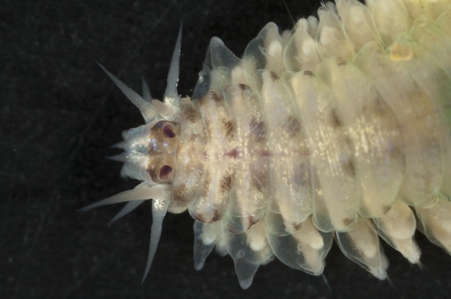General Description
In members of this genus the prostomium (head) is strongly indented between the antennae. The eversible pharynx has paragnaths, but only on the maxillary ring (closest to the jaws). This species can be distinguished from related species with care; the 3 species of Ceratonereis in southern Australia are not easy to tell apart. There are various differences in structure of the parapodia (feet) but the easiest to observe is the dorsal cirrus which in Ceratonereis australis is about 2 times as long as the parapodium; in Ceratonereis perkinsi it is 5-6 times as long as the parapodium; in Ceratonereis singularis the dorsal cirrus is about the same length as the parapodium. Body up to about 4 cm long.
Habitat
Coastal bays and the continental shelf.
Soft substrates
Distribution guide
South-eastern Australia, south-western Australia, and north-western Australia.
Species Group
Depth
Shore (0-1 m)
Shallow (1-30 m)
Water Column
Max Size
4 cm
Commercial Species
No
Global Dispersal
Native to Australia
Species Code
MoV 1093
Identify
Conservation Status
- DSE Advisory List : Not listed
- EPBC Act 1999 : Not listed
- IUCN Red List : Not listed




